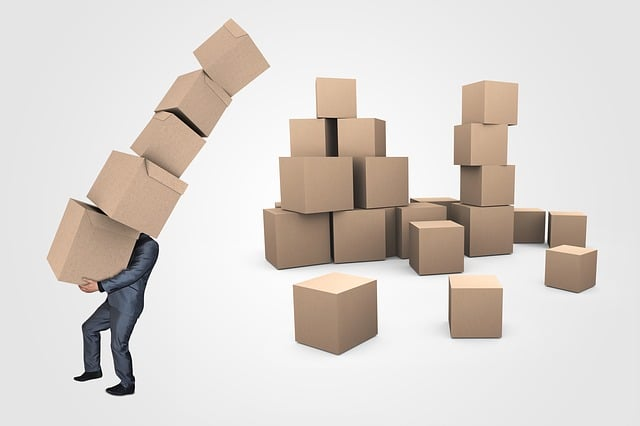
Moving to a new house can be a daunting task that can leave you feeling overwhelmed and stressed. However, with proper planning and organisation, you can make your move as stress-free as possible. This moving house checklist will help you prepare for the move, pack your belongings, and manage your move like a pro.
Preparing for the Move

Creating a Moving Timeline
The first step to preparing for a stress-free move is to create a moving timeline. This will help you stay organised and on track. Start from your moving date and work backwards from there to create a schedule for tasks like decluttering, packing, and hiring a removal company. Don’t forget to leave time for unexpected delays or last-minute tasks.
When creating your moving timeline, it’s important to be realistic about how much time you’ll need for each task. Give yourself enough time to complete each task without feeling rushed or overwhelmed. Remember that moving is a big project, and it’s better to start early than to wait until the last minute.
Decluttering and Organising Your Belongings
Decluttering and organising your belongings before the move can save you time, money, and stress. Go through each room in your home and sort your belongings into three piles: keep, donate, and a pile for unwanted items to sell or throw away. This will make packing easier and help you start fresh in your new home.
When decluttering, it’s important to be honest with yourself about what you really need and use. Don’t hold onto items out of guilt or sentimentality. Remember that the less you have to move, the easier and cheaper your move will be.
Empty the drawer full of personal documents and when deciding to throw away or keep items, imagine you have a storage unit and it will cost you money to store anything at all.
Gathering Packing Supplies
Before you start packing, make sure you gather all the necessary packing supplies. These include boxes, packing paper, bubble wrap, tape, labels, and markers. You can purchase these items from your local hardware store or removal company. Don’t forget to stock up on extra supplies in case you need them.
When choosing packing supplies, it’s important to invest in quality materials. Cheap boxes and tape can break or tear during the move, causing damage to your belongings. Spend a little extra money on sturdy boxes and heavy-duty tape to protect your items.
Another great tip for this is to approach local stores which may have spare boxes available from their frozen food deliveries.
Hiring a Reputable Removal CompanIES
Removals companies can make all the difference when moving to a new house. Research different moving companies in your area, read reviews, and ask for recommendations. Make sure the company you choose is licensed, insured, and experienced. Also, get multiple quotes to find the best deal.
When hiring a removal company, it’s important to ask questions and communicate your needs clearly. Let the company know if you have any fragile or valuable items that require special handling. Also, make sure you understand the company’s policies on liability and insurance.
By following these tips, you can make your move as smooth and stress-free as possible. Remember to stay organised, be realistic about your timeline, and invest in quality materials and services.
Packing Tips and Tricks
Are you planning on moving house soon? Moving to a new address can be overwhelming, but with the right packing tips and tricks, you can make the process much smoother. Here are some helpful tips to help you pack efficiently and effectively whether you are doing it yourself or hiring a removal company.
Packing Room by Room
When it comes to packing, it’s important to stay organised. One of the best ways to do this is to start packing room by room. Start with the least-used rooms in your home and work your way to the most-used ones. This will help you stay focused and make the process less overwhelming. As you pack, be sure to group similar items together and label each box with its contents and the room it belongs in. This will make it easier for you and your movers to know where everything goes in your new home.
For example, if you’re packing your kitchen, you might want to pack all of your dishes and glassware together in one box and label it “kitchen-fragile.” This way, you’ll know exactly where to find these items and your movers will know to handle the box with care.
Labelling Boxes for Easy Unpacking
Labelling your packing boxes is crucial for easy unpacking. As you pack, be sure to label each box with its contents, the room it belongs in, and whether it’s fragile. You can use different coloured markers or stickers for each room to make it even easier. For example, you might use blue stickers for boxes that belong in the kitchen and green stickers for boxes that belong in the living room.
Labelling your moving boxes will not only make it easier to unpack but will also help you keep track of your belongings during the move. If you notice that a box is missing, you’ll be able to quickly identify which room it belongs in and search for it more efficiently.
Protecting Fragile Items
Fragile items like dishes, glasses, and electronics need extra protection during packing. To keep these items safe, use bubble wrap or packing paper to cushion them and pack them tightly in boxes. Be sure to label these boxes as fragile and make sure they’re stacked on top of other boxes. This will help prevent them from getting crushed or damaged during the move.
If you’re not sure how to pack a particular item, don’t be afraid to ask for help. Your movers or a packing expert at your local moving supply store can give you advice on the best way to pack your fragile items.
Packing an Essentials Box
When you’re moving, it’s important to have easy access to the items you’ll need on moving day and the first few days in your new home. To make this easier, pack an essentials box with items like toiletries, clothes, bedding, and all your important documents. Label this box as “essentials” and make sure it’s easily accessible.
Having an essentials box will help you avoid the frustration of searching through multiple boxes to find the things you need. Instead, you’ll have everything you need in one place, making the transition to your new home much smoother from the first night and beyond.
By following these packing tips and tricks, you can make your move less stressful and more efficient. Happy packing!
Managing Moving Day

Preparing Your Home for Movers
Before the movers arrive, make sure your home is ready for them. Clear a path from your door to the moving truck and remove any obstacles like rugs or furniture. This will make it easier for the movers to navigate their way through your home and load the truck efficiently. Additionally, protect your floors and walls with blankets or cardboard to prevent damage. This is especially important if you have hardwood floors or delicate wallpaper that can easily be scratched or torn.
If you have any fragile items that require special attention, make sure to inform your moving company ahead of time. This will give them the opportunity to bring any necessary equipment or materials to ensure the safe transport of your belongings.
Coordinating with the Removal Company
Coordinate with your removal company to make sure everyone is on the same page. Confirm the exact date you will be moving, the time, and new address. It’s important to double-check these details to avoid any confusion or delays on moving day.
Additionally, provide the moving company with any special instructions or requests you may have. This could include things like which entrance to use, any parking restrictions, or any specific items that require extra care.
Make sure to also discuss any additional services you may need, such as assembly or disassembly assistance. Some moving companies offer these services for an additional fee, and they can be a great way to simplify the moving process and save time and energy.
Ensuring Safety on Moving Day
Ensure safety on moving day by following precautions like wearing comfortable and safe clothing. This means avoiding loose clothing that can get caught on objects or shoes with slippery soles that can cause you to slip and fall. It’s also important to lift with your legs, not your back. This will help prevent injury and strain on your muscles and joints.
Sorting out a moving day survival kit
On a moving day, it can be one of the most hectic experiences you can have. We suggest putting together a survival package for you and the family which means you can have tea or coffee relatively easily and pack access to snacks for you and the family. Mobile phone chargers are handy and even a first aid kit as you just never know what might happen. I would advise packing an emergency roll of toilet paper too.
Making Your Old Property Nice for the New Owner
Leaving a note with property hacks that you know such as where the fuse box is and the stop cock. Any appliances, gas cookers and the boiler are difficult for someone to operate for the first time, be sure to leave out any instruction manuals.
In your note, let them know who the current utility companies are who supply your gas and electricity, speaking of which let them know where the gas and electricity meters are and how to read them. As the previous owner you’ll have the most lived in experience to help others.
Book professional cleaners or clean yourself before you leave. Giving the once over is a nice touch which people will appreciate. Also, sticking an envelope on the side with all the keys for windows in there really helps new owners.
If you feel inclined, creating a welcome pack with a congratulations card and a bottle of prosecco or box of tea and biscuits is a nice handover too. This isn’t essential but some people feel great by doing it.
Handling Last-Minute Issues
Lastly, be prepared for any last-minute issues that may arise. Have a backup plan in case of unforeseen delays or complications. This could include having a friend or family member on standby to help out or having extra packing materials on hand.
If you do encounter any issues, stay calm and communicate with your movers to resolve them quickly and efficiently. Remember, moving can be stressful, but with proper planning, organisation, and communication with your moving company, you can make the process as smooth and enjoyable as possible.
ARRIVING AT YOUR NEW PROPerty
It is important to remember before you finally leave your old address and become a new property owner you should take a final meter reading to pay your final bills to any utility suppliers and ensure a smooth transition for the new owners.
So you have exchanged keys and you have arrived at your new property. Pesky meter readings are important to take first. The same rule applies and you can’t always rely on the previous owners to have taken a reading. Ultimately, it is your responsibility as the new owner to take meter readings.
Unpack room by room and put all the boxes labelled by room into each designated room. Kitchen stuff to the kitchen for example.
Key things to do before you move
Set up a royal mail address redirect for a few months. The post office will send your mail to your new address automatically. You can notify financial institutions such as insurance providers of your change of address and they normally have processes to handle this so long as you know your moving date. Notifying your energy bills provider, TV licence, and any credit card companies is a must.
Download Our Handy Moving House Checklist

This moving house checklist was put together as a direct result of our team’s experience of moving house. You can find advice such as taking final meter readings, hiring a removals company, notifying utility providers and updating the electoral roll. There are many things to remember when moving from an old house to a new address. Friends and family members are usually a fantastic source of information too.
By following this moving house checklist, you can make your move stress-free and enjoyable. Whether you’re moving across town or across the country, proper preparation and communication can make all the difference. Good luck with your move!
Check out this article about what type of homebuyers survey you may need and how much they cost.

